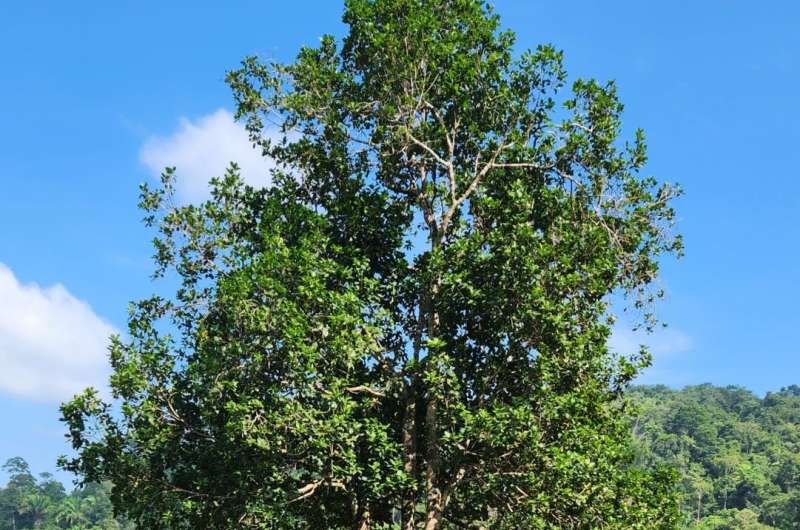This article has been reviewed according to Science X's editorial process and policies. Editors have highlighted the following attributes while ensuring the content's credibility:
fact-checked
trusted source
proofread
New magnolia tree species discovered in northern Honduras

Fauna & Flora's in-country partner in Honduras has discovered a new species of magnolia. Named in honor of two prominent Honduran conservationists, Magnolia ciroorum was found in Pico Bonito National Park during ongoing fieldwork to document and safeguard the threatened tree species within this globally important haven of biodiversity.
To date, just five individual trees of this new species have been identified, making it incredibly rare and eligible for Critically Endangered status on the IUCN Red List.
Ancient trees
Magnolias are among the world's oldest flowering plants, dating back around one hundred million years. The ancestors of today's magnolias shared the planet with the dinosaurs, and relied on beetles for pollination because they evolved before bees even existed.
Until recently, Fauna & Flora's magnolia conservation efforts were focused on the critically endangered species found at our project sites in Vietnam and—historically—China. This new discovery is a timely reminder that wild magnolias are seriously threatened throughout their global range, including Central America, another vital stronghold of these ancient trees.
Endemic to Honduras
Magnolia ciroorum (initially misspelled as Magnolia cirorum in the paper where its discovery was first made public) was found clinging to a steep mountainside of rainforest in Pico Bonito National Park. This latest discovery brings the total number of known Honduran magnolias to 11 species, most of which are found nowhere else in the world.
The new species came to light during field surveys led by Fundación Parque Nacional Pico Bonito (FUPNAPIB), in collaboration with community-led local partner LARECOTURH, which Fauna & Flora is supporting through funding from Fondation Franklinia.
Sergio Estrada and Donovan Aguirre of FUPNAPIB both expressed their delight at the news. "This is a very exciting discovery for us, one which exemplifies the characteristically rich biodiversity found within Pico Bonito National Park. Samples of the species were obtained through field visits by our project's technical team and we were astonished to realize that it was not the rare Magnolia atlantida as first thought, but instead an undescribed species of magnolia. An immediate field trip was undertaken, which allowed us to study the species—including the timing of its flowering and fruiting—in much greater detail and confirm its identification."
What next for newly discovered magnolia?
Rich Howorth, Fauna & Flora's Program Manager for Central America, emphasized the importance of ensuring that adequate conservation measures are put in place to safeguard the magnolia's long-term future. "Now we have discovered this exciting new species, we need to protect it.
"The rich diversity of tropical forests in the Pico Bonito National Park are severely threatened by deforestation, agricultural expansion and illegal timber extraction, especially in the lower parts of the park's buffer zone where the tree is found. Like the closely related Magnolia atlantida, Magnolia ciroorum plays an essential role in its local ecosystem and is a critical climate change–fighting carbon sink. We need to ensure it is not lost before it has truly been found."
Provided by Fauna & Flora



















